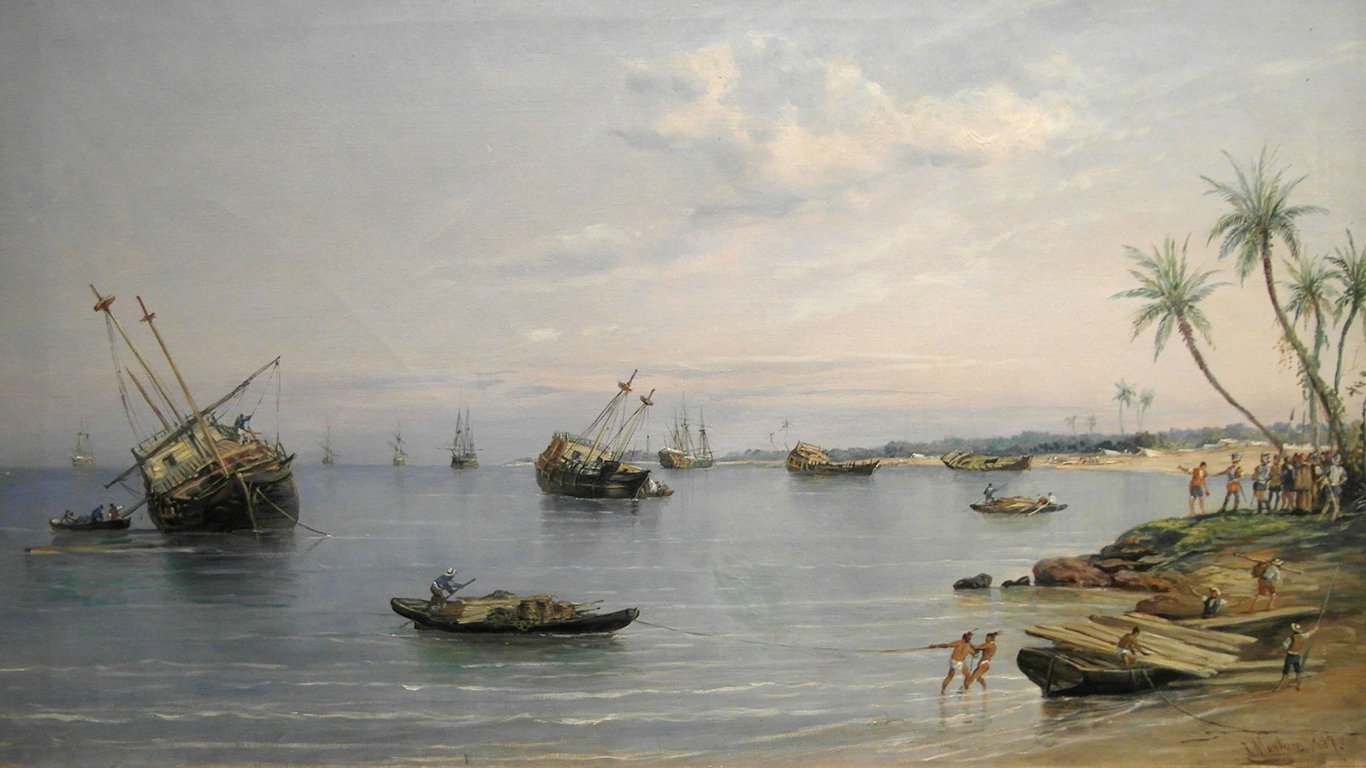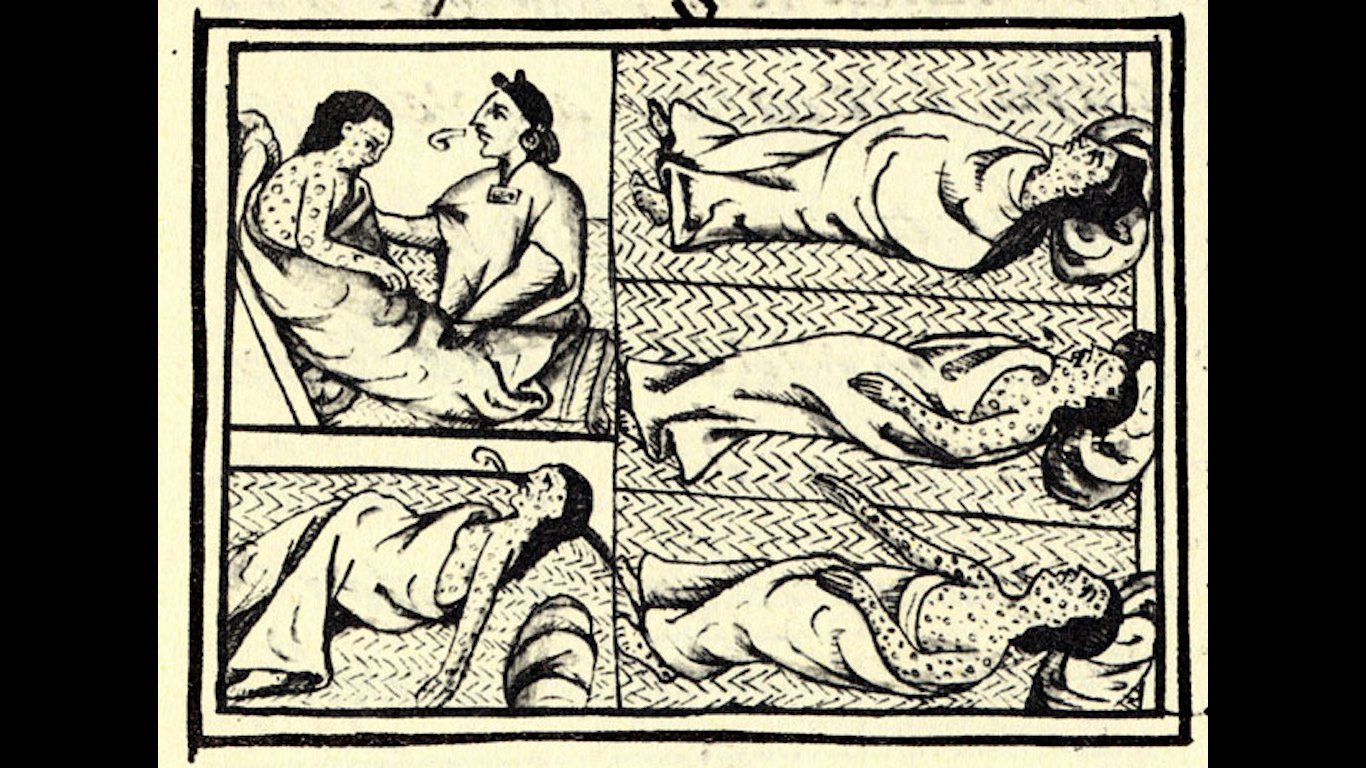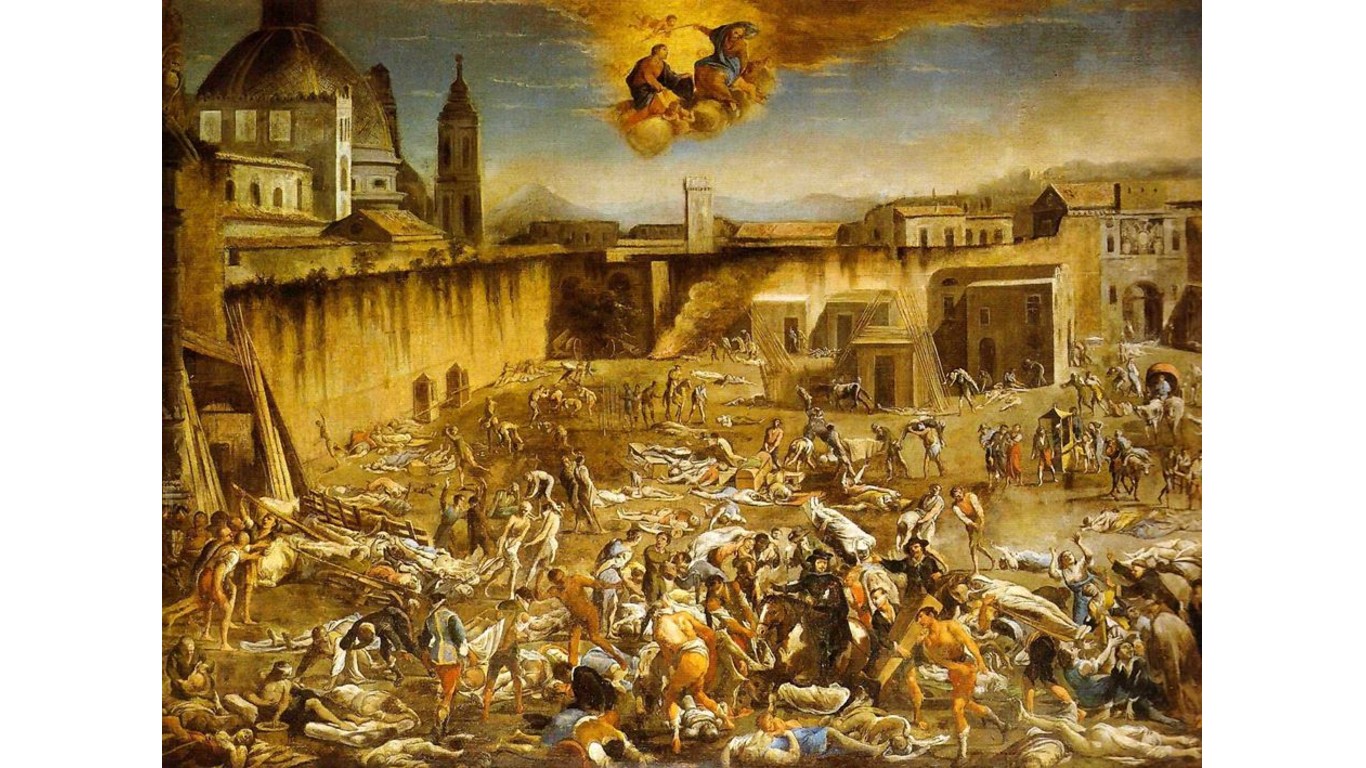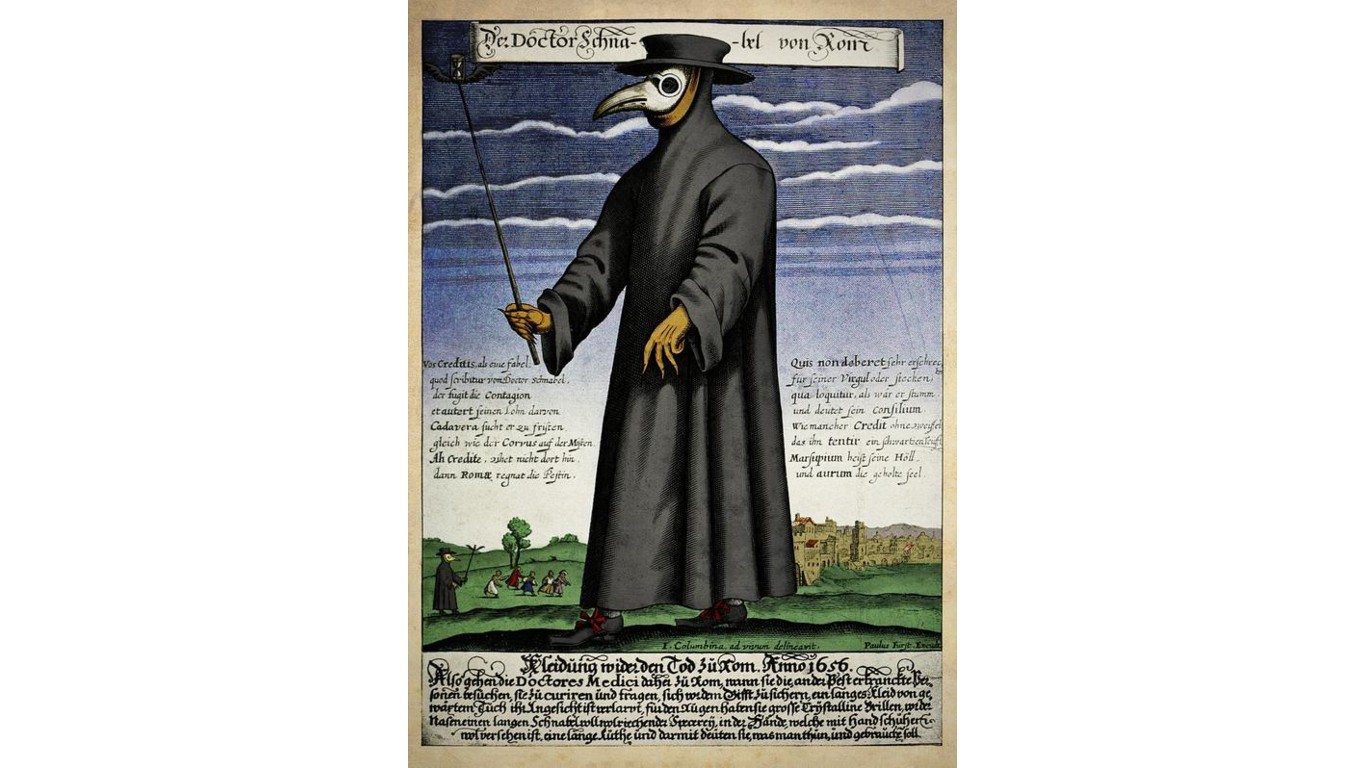
First Cocoliztli epidemic
> Disease: Hemorrhagic fever or Salmonella
> Location: Mexico
> Duration: 1545-1548
> Approx. number of deaths: 5-15 million
The first in a series of viral hemorrhagic fevers to strike Mexico in the 16th century, this epidemic killed about 80% of the native population. Symptoms included profuse bleeding from every orifice, as well as neck nodules, high fever, jaundice, thirst, headache, and diarrhea.

Second Cocoliztli epidemic
> Disease: Hemorrhagic fever or Salmonella
> Location: Mexico
> Duration: 1576-1580
> Approx. number of deaths: 2 million
Affecting populations from northern Sonora down to Guatemala, the second outbreak of Cocoliztli killed up to hundreds of people a day in larger towns during the height of the epidemic. In the end, half the population of Mexico was dead, with Indigenous people suffering the highest mortality rates.
Italian plague epidemic
> Disease: Bubonic plague
> Location: Italy
> Duration: 1629-1631
> Approx. number of deaths: 1 million
Also referred to as the Great Plague of Milan, this series of outbreaks claimed 25% of the Italian population. The disease was spread by French, German, and Venetian troops during the Thirty Years’ War and is considered to be responsible for triggering a huge decline in Italian economies.

Naples plague epidemic
> Disease: Bubonic plague
> Location: Italy
> Duration: 1656-1658
> Approx. number of deaths: 1 million
Although the Naples plague spread from the southern Italian coast up to Genoa and inland to Umbria, its most devastating effects were on the population of Naples itself, where up to 200,000 people died. The epidemic ended after a forced quarantine.
Persian plague epidemic
> Disease: Bubonic plague
> Location: Persia
> Duration: 1772-1773
> Approx. number of deaths: 2 million
This epidemic spread across the Persian Empire — modern-day Iran — into modern-day Iraq, Bahrain, and all the way to Mumbai, India. After thousands of deaths a day, quarantines successfully ended the spread of the disease.







